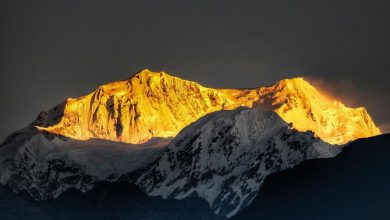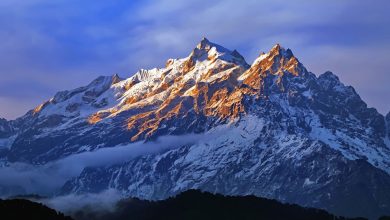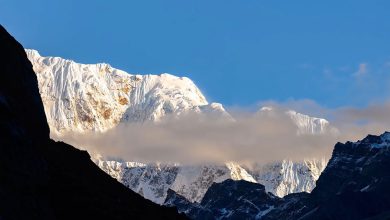How Much Does It Cost to Climb Mount Kanchenjunga?

Mount Kanchenjunga, one of the tallest mountains in the world, calls out to adventurers. But before you start planning, you should know the costs involved. This guide breaks down everything, step by step, in plain language that anyone can understand
Know Kanchenjunga Better
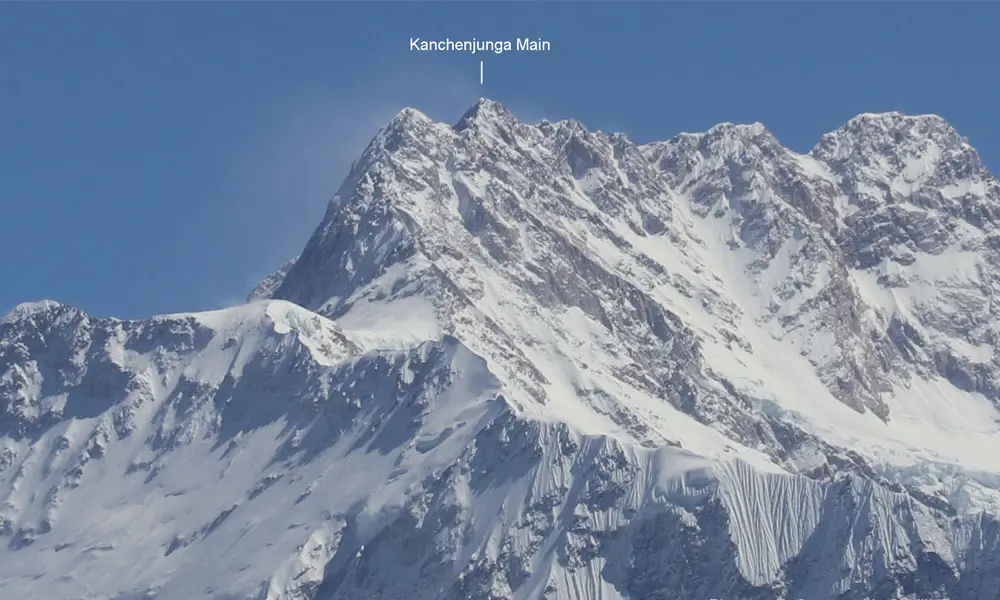
Mount Kanchenjunga is a massive mountain located in the Eastern Himalayas, on the border of Nepal and India.
It’s renowned for its five peaks, with the highest one, known as Kanchenjunga Main, soaring to over 8,586 meters (28,169 feet) above sea level.
Its immense height, remote location, and proximity to a sensitive border make it a formidable challenge. These factors contribute to the increased complexity and cost associated with climbing Kanchenjunga.
The five peaks of Mount Kanchenjunga include:
- Kanchenjunga Main: The highest peak, standing at 8,586 meters (28,169 feet).
- Kanchenjunga West (Yalung Kang): This is the second-highest peak, reaching an elevation of 8,505 meters (27,904 feet).
- Kanchenjunga Central: The third peak, with an altitude of 8,482 meters (27,828 feet).
- Kanchenjunga South: The fourth peak, rising to 8,494 meters (27,867 feet).
- Kangbachen:The fifth peak, known as Kangbachen, stands at 7,903 meters (25,928 feet).
Climbing this mountain is not a walk in the park. It’s tough because it’s so tall and remote, and because it sits near a sensitive border. This makes it more expensive and complex to climb. This unique blend of natural beauty and challenge contributes to the allure and cost of climbing this remarkable mountain.
Permit Costs

Alright, now let’s talk about permits. These are like permission slips for climbing Mount Kanchenjunga. You can’t climb without them, so they’re a pretty big deal.
Restricted Area Permit
There are four Village Development Committees (VDCs) in the Kanchenjunga Region: Yamphuding, Lelep, Paping, and Olangchung Gola, all situated in the wards of Taplejung District. These areas have been designated as restricted by the government of Nepal. Consequently, trekkers heading to these regions during the Kanchenjunga trek must obtain a Restricted Area Permit (RAP). This restricted status is in place because these regions border Tibet and India, and it serves several important purposes.
The main reasons for the restricted status are to manage tourism, preserve the local flora and fauna, and prevent any illegal activities in the area. To get this permit, you’ll need to go through a government-registered and licensed Nepali trekking agency. They can apply for and collect the permit on your behalf.
The price depends on how long you plan to stay within the restricted area. It’s essential to note that the cost is the same for both foreigners and SAARC nationals. Here’s how the cost breaks down:
For the first four weeks : It’s US$ 20 per person per week.
If your stay extends beyond the initial four weeks : It increases to US$ 25 per person per week.
This permit fee structure helps manage the flow of tourists, protect the environment, and ensure the safety of the region while allowing you to explore the stunning Kanchenjunga area.
Keep in mind that these costs can eat up a big part of your climbing budget. The exact cost can vary depending on the route, the season, and government regulations.
Kanchenjunga Conservation Area Project Cost
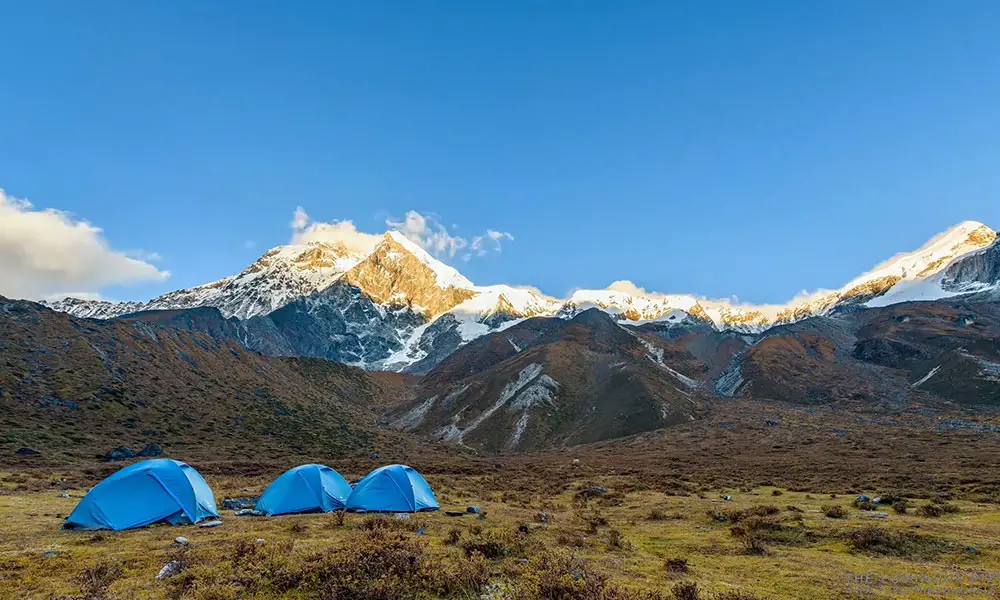
Now, let’s take a closer look at the Kanchenjunga Conservation Area Project Permit and its associated costs:
– For Nepali citizens: It’s just NPR 100 per person.
– If you’re a citizen of a SAARC (South Asian Association for Regional Cooperation) nation: It’s NPR 500 per person, which is approximately US$ 5.
– For nationals of other countries: The fee is NPR 2000 per person, which is approximately US$ 20.
This permit fee structure contributes to the ongoing conservation efforts and the sustainable development of the Kanchenjunga region. It ensures that visitors from different backgrounds can explore and appreciate this natural wonder while helping to maintain its ecological integrity.
Trekking Agencies Costs
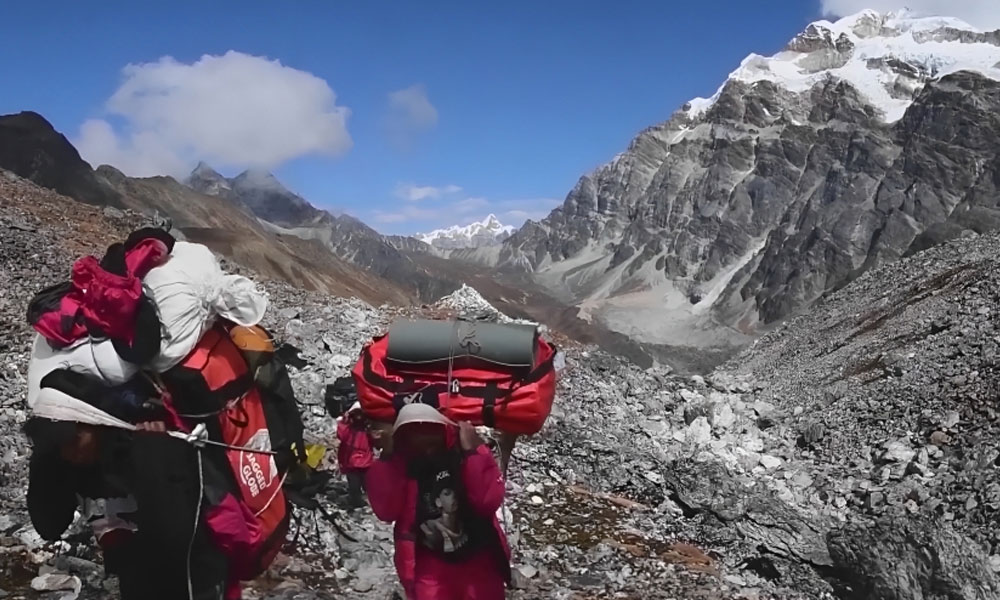
Safety and comfort should always be a top concern while planning your trip, and trekking agencies bring an added layer of safety to your journey. They also make the climb more comfortable and convenient.
In the end, whether it’s worth the cost is a personal choice. Many climbers find that the expertise, safety, and peace of mind that trekking agencies provide make them well worth the investment. It can mean the difference between a good experience and an unforgettable one.
They offer a bundle of services, and these services come with a price tag. Here’s what you can expect
Guides
These are your local experts who know the mountain inside out. They’ll lead you along the right paths, ensure your safety, and share their knowledge about the area. Guides are invaluable on a challenging trek like Kanchenjunga.
Porters
Porters are like the heroes behind the scenes. They carry the heavy stuff so you can focus on walking. No need to lug around a heavy backpack – the porters handle that for you.
Logistics
Trekking agencies take care of all the behind-the-scenes stuff. They deal with permits, book your flights, arrange accommodations, and sort out the paperwork. This means less hassle for you
Now, let’s talk numbers. On average, trekking agencies charge around $10,000 to $20,000. This cost covers all the services mentioned above. While it might seem like a significant amount, it’s essential to understand what you’re getting for your money.
Flights and Transportation
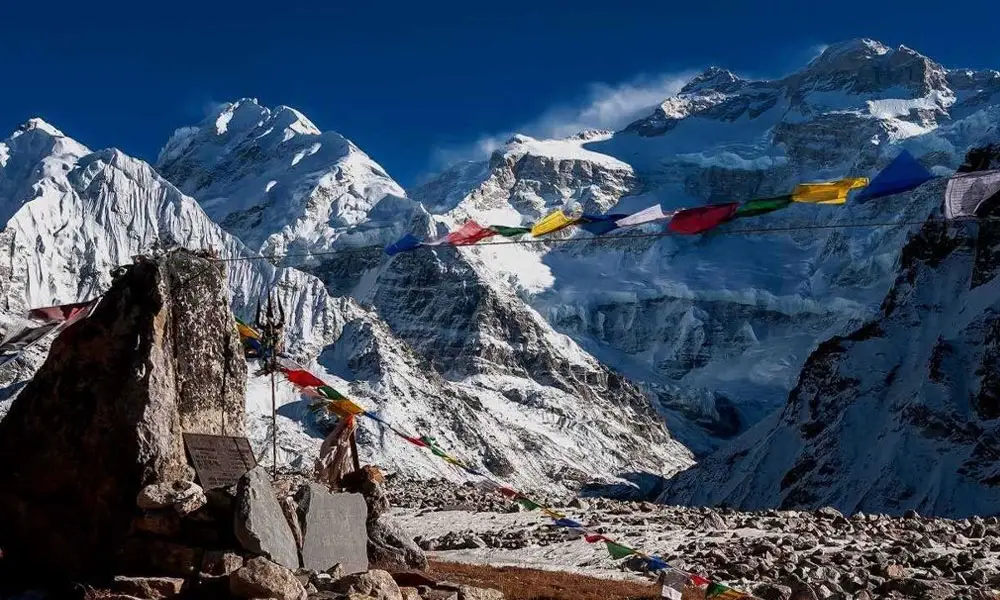
Next, you’ve got to figure out how you’re going to get to the mountain. Most climbers start by flying into Kathmandu, Nepal. It’s like the gateway to the Himalayas.
From Kathmandu, you’ve got to catch more flights or maybe even take a long drive to where your trek starts. This part can cost you about $500 to $1,000. But, here’s the deal: weather in Nepal can be pretty unpredictable, and flights can get delayed. So, it’s smart to keep your schedule flexible.
Equipments and Gears
Now, let’s talk about what you’re going to wear and use on the mountain. You need some serious gear because the weather up there can be intense.
Think warm clothes, sleeping bags that can handle freezing temps, tough tents, and all the climbing stuff like harnesses, crampons, and ice axes. This gear could set you back about $3,000 to $5,000. You might think that’s a lot, but remember, this gear is what keeps you safe and comfy when you’re climbing super high.
So, don’t skimp on the quality stuff. It’s a must.
Here’s a concise gear and equipment checklist with average price ranges:
Clothing: $300 – $800
Footwear: $140 – $300
Climbing Gear: $250 – $500
Camping Gear: $500 – $1,200
Personal Items: $75 – $200
Miscellaneous: $30 – $60
Total Estimated Cost: Approximately $1,295 – $4,590
Food and accommodations
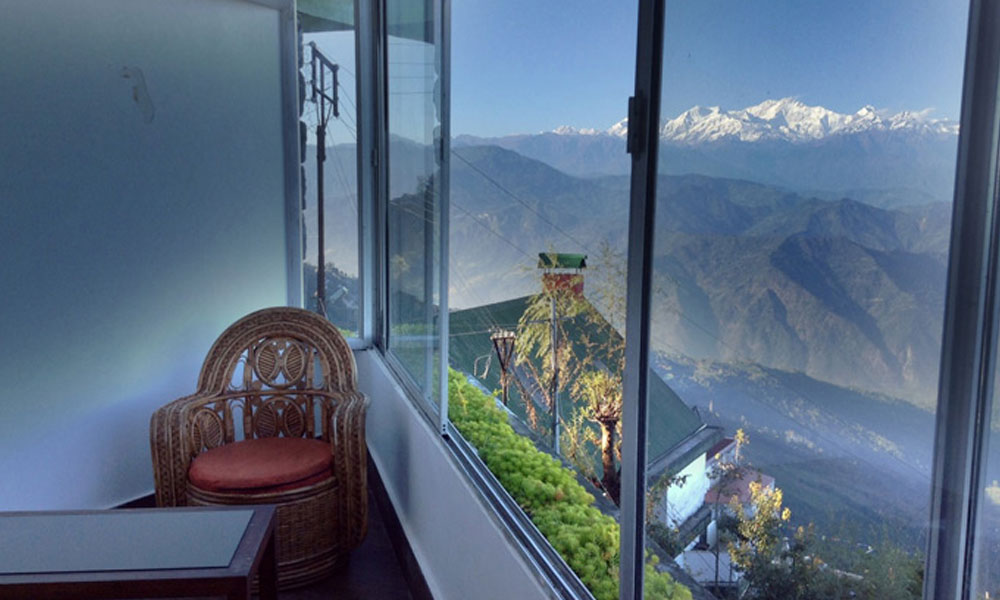
When you embark on your Mount Kanchenjunga trek, understanding your dining and accommodation options becomes essential. Your expenses in this department can vary depending on your preferences and the choices you make along the way.
Dining Options
As you traverse the trekking route, you’ll come across various dining choices. These options cater to different budgets and tastes. The most common dining establishments are teahouses, where you can enjoy budget-friendly meals. These teahouses typically serve dishes like dal bhat (rice and lentils), noodles, and soups, with prices averaging between $10 to $20 per meal. Alternatively, if you’re camping during your expedition, you’ll either need to bring your own food or rely on your trekking agency to supply it.
While camping allows for more diverse meal options, it can be a bit pricier, with meal costs ranging from $15 to $30. In some upscale areas, you might encounter high-end lodges with more extensive menus. However, dining at these lodges can be on the higher side, with meal prices ranging from $20 to $40 or more.
Accommodation Choices
Your choice of accommodation also plays a role in determining your overall expenses. Teahouses are the most prevalent lodging option for trekkers. These basic lodges offer simple rooms with shared bathrooms, typically priced between $10 to $30 per night.
Camping is another choice, with trekking agencies usually providing tents and sleeping arrangements. The cost of camping is often included in your agency’s package. For those seeking more luxurious accommodations, certain areas boast upgraded lodges with comfortable rooms and additional amenities, which can cost anywhere from $30 to $80 or more per night.
Additionally, some trekking agencies offer all-inclusive packages, covering both meals and accommodation during your trek. Such packages can streamline your budgeting process and potentially lead to cost savings. It’s crucial to clarify the inclusions with your agency.
Beyond your core dining and accommodation expenses, don’t forget to budget for additional costs like bottled water, snacks, hot showers (which may incur an extra fee in some locations), and any special dietary requirements.
Extra expenses
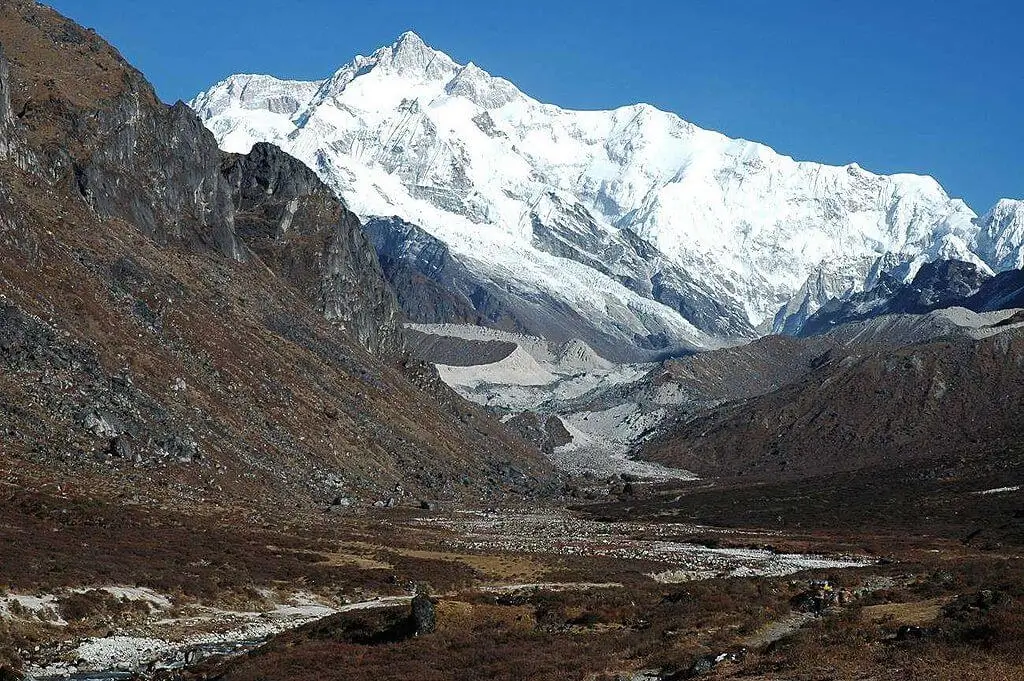
Travel Insurance
You’ll need travel insurance to cover health, evacuations, and cancellations, typically costing $500 to $1,000.
Visa Fees
Depending on your home country, you might need a visa for Nepal, which can range from $30 to $100.
Communication Costs
Climbers often require satellite phones or radios for safety and mountain communication, with permits costing a few hundred dollars.
Tips and Thanks
It’s customary to tip guides, porters, and staff, usually around 10% to 20% of your trekking cost.
Training and Getting Ready
Don’t forget about the cost of training. This includes getting fit, taking mountaineering courses, and learning what you need to know.
Extra Money
Have some extra money ready, about 10-20% of your total budget, for any surprises or emergencies.
All in all, climbing Mount Kanchenjunga can cost you anywhere from roughly $25,000 to $55,000 or even more. Keep in mind these numbers are just rough estimates. Your actual costs can be different based on your choices and changes in the rules.
View this post on Instagram
You may also like:
